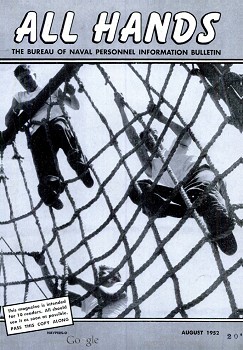
surfresearch.com.au
philip haff, usn : surfing arctic icebergs, 1952
philip haff, usn : surfing arctic icebergs, 1952
|
|
|
|
|
|
 |
surfresearch.com.au
philip haff, usn : surfing arctic icebergs, 1952 |
| Page 2 Icebreakers Answer 'Call of the
North'
Up north of
the Arctic Circle, where the thermometer usually
hovers south of the zero mark, living under even
the best conditions is no snap.
But if it weren’t for a certain breed of ship known as the icebreaker, living would be downright intolerable. Even Eskimos, hardened to the climate, look forward to the yearly visit of an icebreaker. ... |
 |
Page 6 “Every so often, however, the ship will be unable either to back downor go ahead sufficiently to make a charge. This calls for one of two methods of shaking loose. The first depends on a series of interior heeling tanks, those on one side filled with water, while those on the other side remain empty. Then the procedure is quickly reversed. This process makes the ship roll from side to side. “The second method brings the frogmen into the picture. They drop over the side and rig explosives a few yards from the ship. Then it’s ‘blast away’! A tricky but vital operation, this calls for an intimate knowledge of the damaging power of explosives both on ice and on a ship’s hull, and extreme accuracy in placing the high-explosive charges. |
 ‘BLASTING
OFF‘ is sometimes the best way to
get an ice-bound vessel free when her engines and heeling tanks won't budge her. UDT men do the iob. |
 |
All Hands. The Bureau of Naval Personnel Information Bulletin Editor: LCDR C. J. Nash, USN United States Navy, Washington D.C. Number 426, August 1952. Hathi Trust https://hdl.handle.net/2027/mdp.39015081928999 |
 |
|
|
|
|
|
|